Check out the website: https://lenspoliticalnotes.com Look at the recent Political Notes and Len’s Letters on the website:
December 26th , 2022 Len’s Letter #59 Unrigging our System – The Senate
Here’s a gift for Boxing Day.
The answer to an argument about the US Senate. Some say the Senate has nothing to do with democracy. Senators represent states, not people. Each state is represented by two Senators.
Those who make that argument are not wrong. Senators represent their state. When the Constitution was adopted, Senators weren’t even chosen by the people. They were chosen by state legislatures. What’s more, the members of the Constitutional convention were willing to accept some disproportion in representation. Larger states having the same number of Senators as smaller states. But would they have accepted as much disproportion as we have now? One rejected plan would have had a bicameral legislature with membership in both bodies reflecting the population of each state.
The Connecticut Compromise, the bicameral plan we now have, was developed by a committee of eleven:
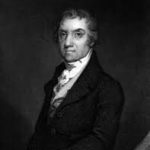
Abraham Baldwin of Georgia; a Connecticut Yankee and Yale graduate who had moved to Georgia and was the first President of the University of Georgia
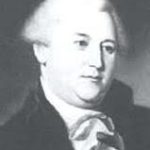
Gunning Bedford Jr of Delaware, born in Pennsylvania and a graduate of what is now Princeton, he was Delaware’s Attorney General and the son of a former Governor of Delaware.

William Richardson Davie of North Carolina was born in England and moved with his family to South Carolina. He was a graduate of what is now Princeton, an attorney and eventually governor of North Carolina
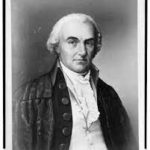
Oliver Ellsworth of Connecticut was a graduate of what is now Princeton, the Hartford County state attorney, and eventually a Senator from Connecticut. He is the reason why the proposal that was submitted to the Constitutional Congress was called the Connecticut Compromise.
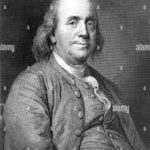
Benjamin Franklin of Pennsylvania was born in Massachusetts, a printer, scientist, philosopher, wit, and one of the most famous people in the world during his lifetime.

Elbridge Gerry of Massachusetts was from a wealthy merchant family, a graduate of Harvard, and eventually, briefly because he died in office, Vice President under James Madison. He refused to sign the constitution because it lacked a Bill or Rights, opposed the idea of political parties, and, despite the gerrymander for which he is famous, was known as a man of integrity.
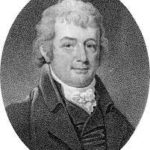
Luther Martin, born in New Jersey and a graduate of what is now Princeton, represented Maryland. An advocate of state’s rights and a legislature with one representative from each state, he left the Convention early because it created too centralized a nation. As an attorney, he defended Justice Samuel Chace in his impeachment trial and Aaron Burr when he was accused of treason.

George Mason of Virginia. The only time he left his native state for any substantial period of time was to attend the Constitutional Convention. His father died young and his mother oversaw the family’s substantial properties. He was an advocate for the immediate end of the slave trade and was one of the three members of the Convention who refused to sign because the constitution did not include a Bill of Rights.
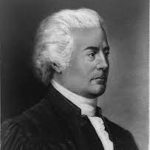
John Rutledge of South Carolina. He left the colonies to study law at the Middle Temple in London and returned home where he was eventually governor of South Carolina and the second Chief Justice of the US Supreme Court. A recess appointment by George Washington, he was subsequently rejected by the Senate. During the constitutional convention, he was the chair of the committee of details which wrote the first draft of the constitution.
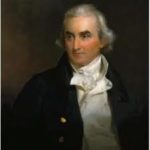
William Patterson of New Jersey was born in Ireland. He came to the colonies as a young man, studied at the University we now know as Princeton, and served as the Attorney General and Governor of New Jersey, Senator from New Jersey, and served on the US Supreme Court.
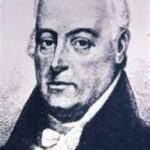
Robert Yates of New York was born into a family of merchants, farmers, and politicians in and around Albany. Initially trained as a surveyor, he trained for the law with William Livingston, then of New York City. He returned early from the convention, arguing that the plans were for too centralized a government. Active in New York politics, he was eventually named Chief Justice of New York’s highest court.
These men, assigned the task to sort out how the people and the states would be represented under the new constitution, proposed what we have – a bicameral legislature with a House of Representatives representing the people and a Senate representing states.
When the Constitution was adopted, the largest states had two Senators:
Virginia, with 110,936 free white men, had two Senators
Pennsylvania with 110,788 free white men, had two Senators
Massachusetts, with 95,464 free white men, had two Senators
The middle-sized states had two Senators
Connecticut, the 6th largest state with 60,523 free white men, had two Senators
Maryland, the 7th largest state with 55,915 free white men, had two Senators
The smallest states had two Senators
Rhode Island, with 16,019 free white men, had two Senators
Georgia, with 13,103 free white men, had two Senators
Delaware, with 11,783 free white men, had two Senators
Things have changed. With progress in democratization, we can count people rather than free white men when we make comparisons. In comparison to the 1790 census, our biggest states in the 2020 census are a lot bigger than our smallest states.
The largest states have two Senators
California, with 35.5 million people, has two Senators
Texas, with 29.1 million people, has two Senators
Florida, with 21.5 million people, has two Senators
The middle-sized states have two Senators
Alabama, the 24th largest state with 5 million people, has two Senators
Louisiana, the 25th largest state with 4.7 million people, has two Senators
Kentucky, the 26th largest state with 4.5 million people, has two Senators
The smallest states have two Senators
Alaska, with 730,000 people, has two Senators
Vermont, with 640,000 people, has two Senators
Wyoming, with 580,000 people, has two Senators
The United States has grown more democratic. Property requirements to vote have been abolished. Slavery is illegal and people of all races vote. Women vote. Some states pass laws through referenda. When a state legislature attempts to suppress the vote, it lies about what it is doing. State leaders insist that they are just trying to make sure no one cheats. Sometimes they believe their own lies. Hardly anyone ever cheats although a Republican candidate for Congress in North Carolina did have his 2018 election disallowed after a staffer had illegally collected absentee ballots from voters and altered them.
While keeping the concept that Senators represent states, we should move toward making the Senate more representative of the country. Larger states should have more Senators. The US Constitution specifies that each state has two senators and I do not suggest that we terminate the constitution. We should look at the Constitution carefully and think about a change. There may be a little bit of fantasy in this proposal – but I will persist. I hope you can accept this proposal as a holiday gift.
Item #1 below, in lighter print, is the original language of the Constitution governing the election of Senators. Item #2 below is the amendment ratified in 1913 that changed how Senators were elected. Item #3 below is Article V of the constitution which describes the amendment process – including, in bold, so readers will take particular note of the additional required change if the Constitution were to allow a change in the number of Senators from each state.
- Article 1. Section 3. The Senate of the United States shall be composed of two Senators from each State, chosen by the Legislature thereof, for six Years; and each Senator shall have one Vote.
- Amendment XVII The Senate of the United States shall be composed of two Senators from each State, elected by the people thereof, for six years; and each Senator shall have one vote. The electors in each State shall have the qualifications requisite for electors of the most numerous branch of the State legislature.
- Article V. The Congress, whenever two thirds of both Houses shall deem it necessary, shall propose Amendments to this Constitution, or, on the Application of the Legislatures of two thirds of the several States, shall call a Convention for proposing Amendments, which, in either Case, shall be valid to all Intents and Purposes, as Part of this Constitution, when ratified by the Legislatures of three fourths of the several States, or by Conventions in three fourths thereof, as the one or the other Mode of Ratification may be proposed by the Congress; Provided that no Amendment which may be made prior to the Year One thousand eight hundred and eight shall in any Manner affect the first and fourth Clauses in the Ninth Section of the first Article; and that no State, without its Consent, shall be deprived of its equal Suffrage in the Senate.
A change in representation in the US Senate requires not only an amendment to the constitution changing the representation, but also requires elimination of the bolded language above. Such a change would not be easy to achieve. You need two thirds of both houses to propose the amendment. That is at least 67 Senators and at least 290 Representatives if all Senators and Representatives are voting. Tough to do. And then you need three fourths of the states. That is the legislatures of 38 of the 50 states. Extremely tough to do.
It can’t get done unless there is a proposal to consider. Here is a proposal that adjusts for the fact that our states are far more disproportionate than what existed when the constitution was ratified. I hope that Oliver Ellsworth would have liked this proposal. Maybe Elbridge Gerry and Benjamin Franklin, too. Senators still represent states in this proposal. The number of Senators suggested is far from proportionate to the number of people in each state – but it is closer to proportionate than what exists now. In 1790, the people of the smallest state were nine times as powerful as the people of the largest state in terms of electing Senators. This proposal gets us to a similar proportion.
WHAT A CHANGE TOWARD FAIRER REPRESENTATION IN THE SENATE MIGHT LOOK LIKE.
- No state would have more Senators than its number of Members of the House of Representatives
- Six states would lose a Senate seat. (Census figures for 2020)
- Wyoming (576,851)
- Vermont
- Alaska
- North Dakota
- South Dakota
- Delaware (989,948)
- Six states would lose a Senate seat. (Census figures for 2020)
- States with between 2 and 8 Members of Congress would continue to have 2 Senators
- Twenty-seven states, a majority of the states, would continue to have 2 Senators
- Montana (1,084,225)
- Rhode Island
- Maine
- New Hampshire
- Hawaii
- West Virginia
- Idaho
- Nebraska
- New Mexico
- Kansas
- Mississippi
- Aransas
- Nevada
- Iowa
- Utah
- Connecticut
- Oklahoma
- Oregon
- Kentucky
- Louisiana
- Alabama
- South Carolina
- Minnesota
- Colorado
- Wisconsin
- Maryland
- Missouri (6,154,913)
- Twenty-seven states, a majority of the states, would continue to have 2 Senators
- Seventeen states would get more than 2 Senators.States with between 9 and 12 Members of Congress would have 3 Senators.
- The seven states that get a third Senator
- Indiana (6,785,528)
- Tennessee
- Massachusetts
- Arizona
- Washington
- Virginia
- New Jersey (9,288,994)
- The arbitrary cut off here is a population of 10 million people.
- The seven states that get a third Senator
- States with between 13 and 19 Members of Congress would have 4 Senators
- Six states get a third and fourth Senator
- Michigan (10,077,331)
- North Carolina
- Georgia
- Ohio
- Illinois
- Pennsylvania (13,002,700)
- Pennsylvania, the largest of the six states, has 7 million fewer people than the next largest state, New York. That seems like a good place to draw a line.
- Six states get a third and fourth Senator
- States with between 20 and 29 Members of Congress would have 5 Senators.
- Two states get a third, fourth, and fifth Senator
- New York (20,201,249)
- Florida (21,538,187)
- Florida has 8 million fewer people than the next largest state — Texas. That seems like another good place draw a line.
- Two states get a third, fourth, and fifth Senator
- States with between 30 and 39 Members would have 6 Senators.
- One state gets a third, fourth, fifth, and sixth Senator
- Texas (29,145,505)
- States with between 40 and 49 members would have 7 Senators — except
- No states are in that category
- States with between 50 and 59 members would have 8 Senators
- One state has 52 members of Congress and gets 8 Senators
- California (39,538,223)
- States with between 61 and 70 would get 8 +1 Senators and so on.
- One state has 52 members of Congress and gets 8 Senators
- One state gets a third, fourth, fifth, and sixth Senator
I will stop here.
There are outstanding issues that will not necessarily require a constitutional amendment. In a democracy, the people of the District of Columbia and the people of Puerto Rico, if they want to remain a part of the United States, should be able to elect Members of Congress who can actually participate in the way that other Members of Congress do. And they should be represented by Senators as well. This will be a topic for another conversation.
I will defend this fanciful proposal.
In 1790, Virginia, the largest state with about 111,000 white males had 2 Senators. Delaware, the smallest state with about 12,000 white males had 2 Senators. If those Delaware white males actually voted for US Senators, each of them would have been 9 times as powerful in electing a Senator as a white male in Virginia.
In 2020, the largest state with about 36 million people had 2 Senators. Wyoming, the smallest state with about 600,000 people had 2 Senators. The voters in Wyoming have become 60 times as powerful in electing a Senator as the voters in California.
In this proposal, the largest state with about 36 million people would have 8 Senators. Wyoming, the smallest state with about 600,000 would have 1 senator. The voters in Wyoming would be about 7.5 times as powerful in electing a Senator as the voters in California. That resembles the relative power of people in the smallest states when the Constitution was drafted and ratified. The proposal also seems consistent with the original intent of the Founders.
The proposal could reasonably be attractive to the public and politicians. The people of 27 states might take comfort in continuing to have 2 Senators. The people of 17 states might favor a plan that gives them additional representation in the Senate. Only 6 states (based on our most recent census and redistribution of House seats) would have a single Senator.
Feel free to write to tell me what you think.
Good news:
Jennifer McClellan won the Democratic nomination for Congress for VA 04. The election is not until February 21. That will bring the House to 222 Republicans and 213 Democrats.
Candidate to help
Aaron Rouse is running for VASD07. His election would flip the seat left by Jen Kiggans who defeated Democrat Elaine Luria for VA 02. Aaron Rouse’s win on January 10th would retain a pro-choice majority in the State Senate.